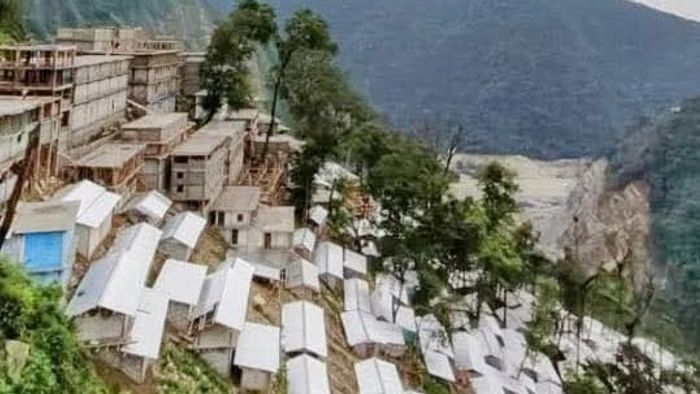Arunachal: Ghost houses emerge in Roing amid Dibang Multipurpose Project compensation drive
Roing in Lower Dibang Valley district has witnessed the sudden emergence of ghost houses, built in haste to secure compensation under the Rehabilitation and Resettlement (RR) package of the upcoming NHPC hydro project at Munli.

- Sep 30, 2025,
- Updated Sep 30, 2025, 8:40 PM IST
Roing in Lower Dibang Valley district has witnessed the sudden emergence of ghost houses, built in haste to secure compensation under the Rehabilitation and Resettlement (RR) package of the upcoming NHPC hydro project at Munli.
Within just a month, several makeshift structures have cropped up, raising questions over the misuse of benefits meant for genuine project-affected families.
The Munli project, officially known as the Dibang Multipurpose Project (DMP), is a flagship 2,880-megawatt hydropower venture by NHPC Limited. Located near Munli village, it is designed to be India’s highest dam with a 278-metre-high Roller Compacted Concrete (RCC) structure. Beyond producing clean energy, the project aims to moderate floods and drive economic development in the region. Commissioning of the dam is slated for February 2032.
However, the rapid rise of uninhabited and hastily constructed houses around the project area has drawn attention to the challenges of compensation management. Locals allege that opportunistic individuals are trying to take undue advantage of the RR package, undermining the intent of the rehabilitation programme, which is aimed at providing genuine support to displaced families.
While the Dibang project represents a milestone in India’s renewable energy ambitions, the issue of ghost houses highlights the complexities of balancing large-scale infrastructure development with transparent and equitable resettlement. Authorities are expected to step in to verify claims and ensure that compensation reaches the rightful beneficiaries.